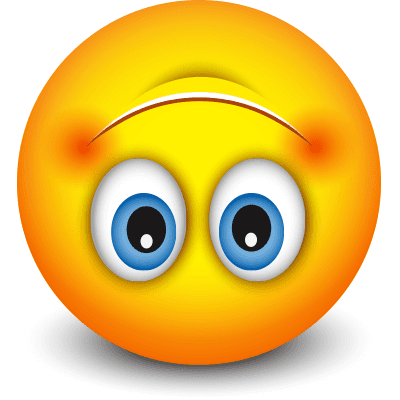Decoding the Flipped Grin: Understanding the Upside Down Smiley Face
Have you ever received a text sprinkled with an upside down smiley face and been left scratching your head? This seemingly simple inversion of a classic symbol can leave one wondering: is it sarcasm? Playfulness? Or something else entirely? The upside down face, or inverted smiley, has become a staple of online communication, adding a layer of nuance and intrigue to our digital dialogues.
This seemingly small shift in orientation can drastically change the perceived meaning of the message. While a regular smiley conveys happiness or agreement, its upside down counterpart can communicate a range of emotions, from gentle sarcasm and irony to playful silliness or even subtle frustration. Understanding the context and the sender is key to deciphering the true intent behind the flipped grin.
The ubiquitous nature of emojis in modern communication has led to the evolution of their meanings and interpretations. The upside down smiley is a prime example of this evolution. Its ambiguity allows for a flexible and personalized expression, making it a powerful tool in online conversations. However, this same ambiguity can also lead to misinterpretations and confusion, highlighting the importance of mindful emoji usage.
The exact origin of the upside down smiley face is difficult to pinpoint, as it evolved alongside the broader adoption of emoticons and emojis in online communication. However, its rise in popularity can be attributed to the growing need for more nuanced emotional expression in digital spaces. The limitations of text-based communication necessitate the use of symbols to convey tone and intent, and the upside down smiley filled a niche for expressing subtle or complex emotions.
One of the central issues regarding the inverted smiley is its susceptibility to misinterpretation. Its meaning is heavily dependent on context, the relationship between communicators, and cultural factors. What might be perceived as lighthearted sarcasm in one situation could be interpreted as passive aggression or even hostility in another. This potential for miscommunication underscores the importance of considering your audience and the overall tone of the conversation when using the upside down smiley face.
A flipped smile can indicate sarcasm, irony, or a subtle hint of disapproval. For example, if someone says, "Oh, great," followed by an upside down smiley, it suggests they aren't actually thrilled with the situation. Conversely, it can also be used playfully to indicate silliness or lighthearted teasing. Imagine a friend sending a picture of a ridiculous outfit with the caption, "Ready for the party!" and an upside down smiley. This usage denotes humor and playfulness.
One benefit of the upside down smiley is its ability to add a layer of humor or sarcasm without being overtly negative. Another advantage is its versatility, allowing it to convey a range of subtle emotions that might be difficult to express with words alone. Finally, it contributes to the overall richness and dynamism of online communication by providing a shorthand for complex feelings.
Advantages and Disadvantages of Using the Upside Down Smiley
| Advantages | Disadvantages |
|---|---|
| Conveys subtle humor and sarcasm. | Can be easily misinterpreted. |
| Adds depth and nuance to online communication. | May appear passive-aggressive in certain contexts. |
| Offers a concise way to express complex emotions. | Its meaning can vary across different cultures and communities. |
Frequently Asked Questions:
1. What does an upside down smiley face mean? - It can convey sarcasm, irony, silliness, or subtle frustration.
2. When should I use an upside down smiley face? - Use it when you want to add a touch of humor or sarcasm to your message, but be mindful of the context.
3. Can the upside down smiley face be misinterpreted? - Yes, its meaning is highly context-dependent and can be easily misunderstood.
4. Is it appropriate to use the upside down smiley face in professional communication? - Use with caution in professional settings, as it can be perceived as unprofessional or passive-aggressive.
5. What are some alternatives to the upside down smiley face? - Depending on the intended meaning, you could use other emojis or simply express your feelings with words.
6. How does the upside down smiley face contribute to online communication? - It adds depth and nuance, allowing for more expressive and engaging conversations.
7. Is there a difference between using the upside down smiley face in text messages versus social media? - The context generally dictates the interpretation, but social media tends to be more informal.
8. Can using the upside down smiley face be considered rude? - It depends entirely on the context and your relationship with the recipient. When in doubt, err on the side of caution.
Tips and Tricks: Pay attention to the overall tone of the conversation before using an upside down smiley. Consider your relationship with the recipient. When in doubt, use words to clarify your meaning.
In conclusion, the upside down smiley face, while a seemingly simple symbol, plays a significant role in the nuanced landscape of digital communication. It offers a concise way to express complex emotions, adding depth and humor to our online interactions. However, its inherent ambiguity requires mindful usage to avoid misinterpretations and potential offense. Understanding the context, your audience, and the potential for varied interpretations is crucial to effectively wielding the power of the flipped grin. By exercising caution and considering the subtle implications of this intriguing emoticon, we can harness its expressive potential to enhance our online communication and foster more engaging and meaningful connections. So, next time you encounter a flipped smile, take a moment to decode its hidden message – you might be surprised at the layers of meaning it reveals.
Understanding johnsonite wall base specifications
Crystal clear ice the ultimate guide to home depot ice maker water filters
Decoding messis fifa 23 prowess












